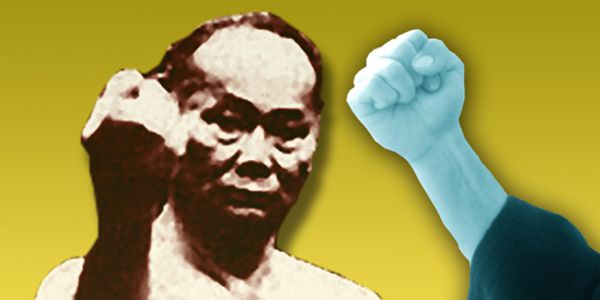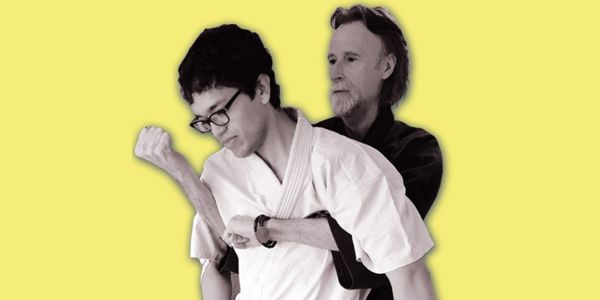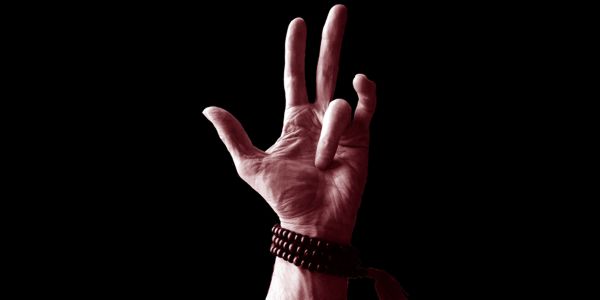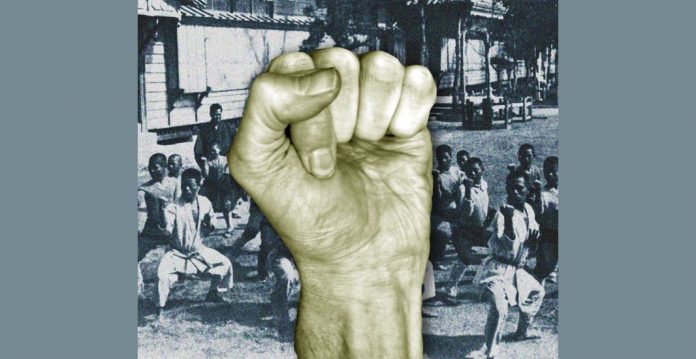There is an unfamiliar side to traditional martial training similar to encountering a foreign language that runs through authentic karate-do practice. The Okinawans labeled this elusive subject, Kiko or Chinkuchi.
Kiko is a unique method of generating unusual strength across the entire spectrum of karate technique. It remains an obscure practice even to many senior karate-ka today. This alien martial language has led to some confusion about the purpose and value of certain old world technique. And its loss in modern karate contributes to the deterioration of traditional kata knowledge. I call this situation the loss of nuance. I am referring specifically to advanced karate-do practice, not beginner technique.
Western martial culture initially did not understand the full face of Okinawan karate-do during its adoption in the middle of the century. We took only those values readily seen and easily grasped, misinterpreting an elusive body of additional knowledge lying beneath the surface. We could call this rich undercurrent, this foreign nature, Internal Karate-do.
Okinawan kata was crafted with this inner dimension intact, but it was not conveyed or visible to Western practitioners and, as a result, not passed forward to all but a select few.
Kiko is a unique method of generating unusual strength across the entire spectrum of karate technique.
As a result, Western culture, for lack of a proper decoder, has had to mostly reinvent the kata wheel with much trial and error, or simply embrace Okinawan karate and its kata at face value. This has led to the loss of some of the functions of the vital fist tools of the karate arts.
I will frame out a small portion of the language of Internal Karate in this commentary on a unique Okinawan technique in which a fist is formed by keeping the index finger straight at the top joint. In some circles it is referred to as the Motobu Fist, named after the Okinawan master, Choki Motobu.
I’d like to correct a general misunderstanding that currently exists about the primary purpose of this fist.
I will also use this perspective as a platform for why karate kata is degrading in modern culture. A lack of fluency in Kiko principles has many senior karate-ka guessing and misinterpreting the applications of the old world fist tools that have fallen into disuse.
Readers might want to familiarize themselves with an article that appeared on the Fighting Arts forum; Secrets of the Old Okinawan Fist. (see: http://www.fightingarts.com/reading/article.php?id=215). This essay looks at how, and speculates on why such a fist formation was used. It is a technique unfamiliar to mainstream American karate students.
To start, the fist formation illustrated above is not used as a primary punching tool, despite its advocates. And the value of its punching efficacy is dependent on other critical details more than simply balling the fist in this manner.
This presents a rather complicated challenge to those holding the belief that its primary purpose was, or is, for striking. At issue, is whether its real purpose was actually transmitted, concealed under the guise of being something else, or a likely misinterpretation. Its effectiveness as a strike is suspect for all but a specific use on a particular angle. A broader and more critical dialog needs to be opened up with those who have trained long term with this fist.

It is natural and understandable that when hearing the word ‘fist’, martial artists readily assume the reference is to the knobby endpoint of a punch. Fists, however, serve a multitude of applications, not all related to strikes. In Kiko practice we make various fists to increase an arm’s rotational strength, (clock-wise or counter-clockwise), to pound downward, to break various types of grips or locks placed upon us, and to magnify muscular contraction in general for all manner of limb action.
This fist was used specifically in the Neihanchi kata during the rotation of the torso. The fist was configured in this manner to increase torque in the hips and to provide powerful contractibility to the back muscles for both holding or securing an assailant from behind, and additionally, for not being easily held by one grabbing your torso from behind.
The most important statement I can make about this fist is that martial artists will miss the authentic nature of karate-do if focusing only on a single aspect of a technique as a definition of its purpose. A fist is part of an arm, which is part of a shoulder, which is part of a torso, and so on, until all five levels of a technique are in balance (see below). High-level karate technique is, and always has been, viewed in its entirety as a holistic formula. Change one variable, or make a gross assumption, and the technique may lose its intended charge. The parts contribute to the whole and the whole contributes to the parts.
I’ve encountered quite a few martial artists who are baffled by the above statements. They ask, “How does a fist configuration have anything to do with hip strength.” The foreign language of Kiko fills in this missing comprehension.
In my Youtube discussion on the Five Levels Of Kata I explain that all kata consist of five distinct levels of training. The deepest level, the undercurrent affecting all the others, deals with Ki flow in and around the body. It is precisely this flow of intrinsic energy, this juice for the musculature, that is manipulated—not just by certain fist formations but by the body dynamic as a whole.
The language of and its biofield formulations are as deep and complex as karate’s biomechanical functioning.
 Therefore, it is always a mistake to talk of a specific fist without addressing the full means of conveyance; the dachi used, the manner of breathing, the positioning of the passive hand, the state of mind of the conveyor, and the exact points of engagement with another’s anatomy.
Therefore, it is always a mistake to talk of a specific fist without addressing the full means of conveyance; the dachi used, the manner of breathing, the positioning of the passive hand, the state of mind of the conveyor, and the exact points of engagement with another’s anatomy.
Kiko practice views karate kata and its postures as a series of energetic formulas. The resolution of any physical encounter can then be derived at by different ‘proofs,’ so to speak, which is why we see so much variation in kata from style to style.
There are two ways of enhancing karate skills with this little known technical side. One method is achieved through the ‘Inner Form School Formula,’ the other, through the ‘No Form School Formula’. The Inner Form Schools go beyond biomechanics by availing themselves of biofield dynamics. (The term ‘biofield’ has recently come into scientific use to explain hidden forces that affect health and strength. In Asia, the common catchall term for these invisible forces is Chi or Ki).
The language of Kiko and its biofield formulations are as deep and complex as karate’s biomechanical functioning. It is an entirely different art-within-an-art. Its practice is neither ambiguous nor vague once one has entered the circle of its principles. It does not shroud itself in mystical language but it is so unfamiliar to mainstream practitioners that it requires face-to-face, hands on, direct experience, to feel just how extraordinary its value is to all karate-do technique. Kiko is the foundation of pressure point work and considered a more highly prized field of knowledge.
Configuring a fist in a particular manner will influence energy in the body’s meridians to reorient its flow to specific parts of the musculature.
We need to ask a critical question at this juncture. Why weren’t the secrets of the old Okinawan fists, and other equally profound methodologies, passed along to modern students?
Several answers currently shape our understanding of the karate arts; In some organizations, such insights were not to be shared with any but the most select of the master’s students. Two; they weren’t to be shared at all with outsiders— strangers/foreigners. Three, they weren’t actually articulated or spoken methods. They were transmitted entirely by example, that is, by doing. You either got it or you didn’t. These formulas can be, and were more often, arrived at intuitively. But it takes a very sensitive person with the right focus in modern society to get there by the same non-logical means.
Most American karate-ka who initially studied overseas in the late 1940-1960’s were only taught the basics of a very deep art.
Neihanchi is one of Okinawa’s oldest and essential Okinawan kata. In its original form, it was a Kiko grappling training sequence that familiarized a student to hands-on energy work and considered push-hands style training.
When Okinawan karate moved away from its push hands kumite into its modern ballistic focus (karate’s sole ballistic nature proved to be a misinterpretation by early American pioneers), it lost a large component of kata’s Kiko values.
If you go to an acupuncturist with a pain in your shoulder and the needling instantly relieves it – even though the needles were placed in your ankles, you might feel that some kind of medical voodoo was performed upon you. Kiko posturing works the same way. Configuring a fist in a particular manner will influence energy in the body’s meridians to reorient its flow to specific parts of the musculature. There is no better form that introduces students to this theory than the Sanchin kata. However, much of this kata’s inner value has also been lost.
I’ve studied Kiko for nearly twenty-five years, on top of twenty-three years of practicing karate’s biomechanical nature.

Using our acupuncturist model again, imagine that the acupuncturist tells you that one of your meridians is reversed and leading to a condition of dis-ease. By means of needling, the current is reset. Suppose you could become sensitive enough to actually feel the change of this bioelectric current (one of Kiko’s training goals). The next time you feel your channel reversing, you mentally reset it to normal.
Kiko training achieves the exact same aim in regards to physical strength and its relationship to channeling Ki through the meridians by means of precise body positioning and mental focus.
This brings up the second purpose for the pointer finger to be kept straight in this fist; it teaches the user how to increase energy flow to the pinky and ring finger to enhance one’s grip. Because neihanchi originally taught select grips, locks and escapes, it was vital for developing strong forearm strength. Keeping the pointer finger straight causes the thumb, which acts as a specific energy gate, to channel Ki to the smaller two finger muscles.
Smith’s article cites an observation by Patrick McCarthy that this fist position influences the ‘cup-ability’ of the palm. However, the value of a cupped palm is not divulged. The reason one ‘cups’ is to influence Ki flow. The energy flowing into the hand and forearm is controlled mainly by the position of the thumb, assuming the fingers are rolled correctly and not themselves placed into the center of the cup. The cup of the palm is found by folding the ring finger in toward the palm. The cup is formed and located where the ring finger touches. A closed fist is to be understood as, ‘thumb-sealing-the-cup’, which is a yin channel sealing. This action occurs with a fist that moves the thumb muscle toward the cup. When the yin channel is sealed the yang channels open. An open fist is, ‘thumb-opening-the-cup.’ This is a yang-sealing action. When the yang channel is sealed the yin channels open. This action occurs when the thumb muscle moves away from the center of the palm as in the fist described, or in the traditional isshinryu fist with the thumb resting on top of the index finger. Specific musculature is charged when adjusting the thumb to different positions. This principle of charging and discharging muscular energy lies at the heart of Kiko practice.
Repeatedly performing this one finger straight, energetic mudra during specific parts of the kata will help a practitioner increase the grip of their last two fingers. The pointer finger position is no longer necessary once the channel and its directional current has been identified and can be controlled mentally.
For a simple test of the above, make a normal fist and pay close attention to how well you can tighten the last two fingers. Now, assume the fist in question. You should note a significant ability to tighten the last two fingers. This fist can be made instantly when necessary. Observers will never catch this subtlety.
As much as our traditional forms are deteriorating, there is also an exciting, yet small, renaissance taking place with a growing awareness of kata’s hidden layers of technique by some senior U.S. karate-ka.



